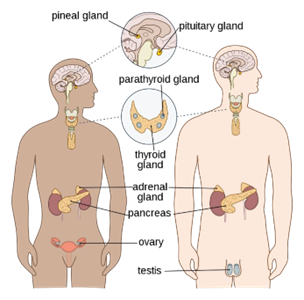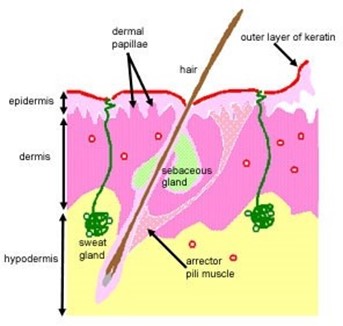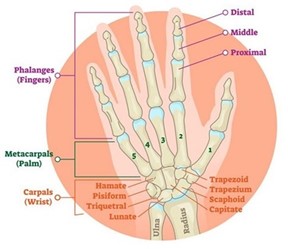The genetic code carried by macromolecules is called?
DNA
Chromosomes
Nucleotides
RNA
The Correct Answer is A
DNA is a double-stranded macromolecule made up of nucleotides that carry genetic information. The sequence of nucleotides in DNA determines the genetic code, which controls the development and function of living organisms. Chromosomes are structures made up of DNA and proteins that carry genes. Nucleotides are the building blocks of DNA and RNA. RNA, on the other hand, is a single-stranded macromolecule that plays a key role in protein synthesis by carrying genetic information from DNA to ribosomes.

Nursing Test Bank
Naxlex Comprehensive Predictor Exams
Related Questions
Correct Answer is B
Explanation
Dermal papillae are small, raised structures in the dermis of the skin. They contain nerve endings, capillaries, and other specialized cells. Dermal papillae are responsible for creating fingerprints, as they push up into the epidermis and create ridges on the surface of the skin. These ridges are what give each person their unique pattern of fingerprints. Sudoriferous glands are responsible for producing sweat, Merkel cells are involved in touch sensation, and arrector pili are responsible for the contraction of hair follicles

Correct Answer is C
Explanation
The bones that articulate with the carpals are the distal end of the radius and the distal end of the ulna. These two bones form the wrist joint with the carpals. Therefore, if you break the distal end of both the ulna and radius, it will result in a wrist fracture. This type of injury is also known as a distal radius and ulna fracture.

Whether you are a student looking to ace your exams or a practicing nurse seeking to enhance your expertise , our nursing education contents will empower you with the confidence and competence to make a difference in the lives of patients and become a respected leader in the healthcare field.
Visit Naxlex, invest in your future and unlock endless possibilities with our unparalleled nursing education contents today
Report Wrong Answer on the Current Question
Do you disagree with the answer? If yes, what is your expected answer? Explain.
Kindly be descriptive with the issue you are facing.
